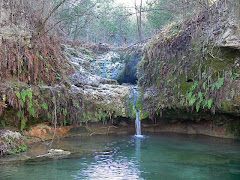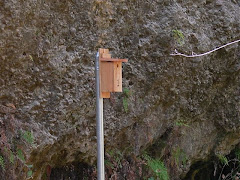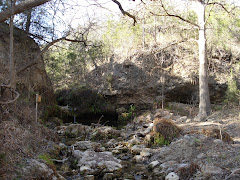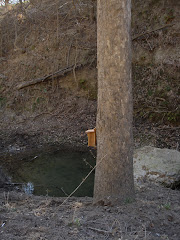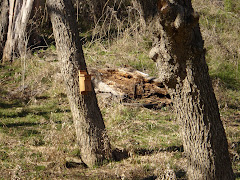 Six A.M. 67 degrees with overcast skies as I biked to East Park Boundary. I wish I camped overnight as it would have been perfect sleeping weather out here. The Common Nighthawks were doing their display dive.
Six A.M. 67 degrees with overcast skies as I biked to East Park Boundary. I wish I camped overnight as it would have been perfect sleeping weather out here. The Common Nighthawks were doing their display dive.Though many birds have fledged young, like the year round residents, there are a fair number of late migrants who are still on eggs or feeding nestlings at this time. I saw a Summer Tanager Thursday carry a large white grub away to the nest. Today I saw a female Golden-cheeked Warbler eating insects rather urgently. I believe she left the nest with eggs to fuel herself.

There are three vireo species nesting along the river: the White-eyed Vireo, Yellow-throated Vireo, and Red-eyed Vireo. The White-eyed Vireo arrived a couple weeks earlier than the other two species so one can see and hear many family groups moving around. The Yellow-throated Vireo really likes to hang out in the Bald Cypress trees along the river. Painted Bunting males on territory can be heard just about everywhere in the park, and Indigo Buntings can be found in lesser numbers along the river. The Blue Grosbeak female was adding her finishing touches to the nest I found on Thursday.
The Acadian Flycatcher finally made its appearance to the Tobacco Creek Seep half way through my survey there. It sang and made a twittering sound while flicking its wings. I believe this male
 has a mate sitting on eggs somewhere. This individual has been sited here the entire month of May.
has a mate sitting on eggs somewhere. This individual has been sited here the entire month of May.The flower photo is the Twisted Leaf Yucca which is blooming abundantly throughout the Hill Country right now. I added the second Yucca photo to show when the blooms fall off of the tall flowering stalk they get impaled on the pointed leaves below. At the end of every survey I settle down to writeup my field notes. When my last site is Hackenburg Creek I take advantage of the Bald Cypress shade along the river.

















